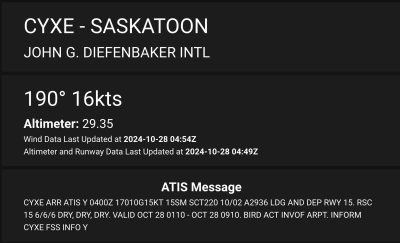
Nav Canada has announced that telephone-based ATIS (Automated Terminal Information Service) will be discontinued early in 2025. The air traffic control service provider blames the service reduction on its telephone service provider.
Especially popular among the General Aviation community, the telephone service allowed pilots to obtain airport conditions remotely rather than having to wait until they had access to an aviation radio – typically when they entered their cockpits.

Replacing the ATIS telephone system will be a text-based service accessed via Nav Canada’s NC-AeroView internet portal, which extends remote ATIS access to airports that were not previously accessed by the telephone-based service.
The new system will provide more information, such as a graphical display of crosswind components overlaying a diagram of the airport’s runway layout.
It’s a bit baffling, however, why Nav Canada, which likes to highlight their innovative technology as being world-class, even industry leading, has chosen to display ATIS information using only archaic teletype codes that were developed almost a century ago when time-based teletype messages were costly; the codes were developed to save space and therefore telecommunication costs. Today, most third-party providers of airport weather reports (e.g., METARs and TAFs) provide decoded, plain-English reports as a user-selected option.
Although pilots who fly frequently are used to the codes and have little or no trouble interpreting them, many infrequent pilots may have to return to their aviation textbooks or search online for explanations and become used to the new ‘service’.
